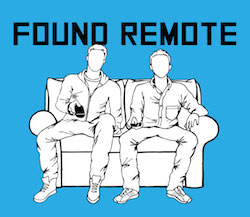As virtual reality continues to evolve, brands are going all in to create new and immersive connections with consumers. With Google Cardboard, Volvo put users in the driver’s seat of their new XC90 SUV for an idyllic virtual ride; Using Oculus Rift, HBO took consumers for an immersive experience ascending The Wall at Castle Black, promoting its hit show, Game of Thrones; footwear company Tom’s implemented a “virtual reality chair” at their flagship Venice shop taking buyers on a giving trip to highlight their brand mission; and hiking boot Merrell created an on-site Oculus Rift activation – TrailScape – in which guests walked alongside cliffs, across a rope bridge, feeling each step beneath them, their pulses racing.
While some brands are consistently getting virtual reality right, others are falling short. At its core, VR offers an incredible user experience, but as the technology becomes more and more available, brand narrative is becoming increasingly important in order to create a full-throttle wow factor.
As VR expands and evolves, it’s up to advertising pros to deliver a content experience grounded in strong storytelling that elicits a powerful, emotional connection. The following considerations, and predictions, will help agencies stay on track and ahead of the curve when it comes to tapping into the power of VR to deliver next-level results:
New Tools, New Potential
Pro: VR offers a unique addition to the toolbox of the brand-building trade. In an era where traditional go-to’s in advertising (including but not limited to the :30 spot) seem to be falling short as audience’s expect more, VR enters the fray as a growing and viable new platform. Albeit one requiring a completely different approach.
Con: The transition to VR is challenging and are agencies going to be able to adapt? Most importantly, the fundamentals are radically different. Everything from measurement standards to production timelines to skills and audience consumption require a totally new approach. The :30 isn’t likely to go away but the brands that will matter most in the future will be the ones that transcend traditional forms of advertising. VR is one of many ways to get there, but the learning curve can be steep.
What to Expect: Next-level Storytelling
Look for branded entertainment to reach new heights. Expect exciting collaborations between high-end creative storytellers with innovative brands looking to further their brand identity. The results will vary and there will be many failures, but the wins here will be incredible and potentially industry transforming.
Captive Audience, Fully Immersed
Pro: VR is all-encompassing like nothing we’ve seen. It can make even the best IMAX movie look like a school play. Such immersion not only has the potential to change how brands look to connect with audiences but opens new possibilities to how audiences expect to engage with brands. At the core, the brand / fan relationship is capable of much more. Is VR the answer to reaching the next level?
Con: There are limitations in reach, even with interconnected set-ups where users share a singular experience. Projections vary but no matter how you slice it, market penetration is small and the industry is early stage. Brands have compensated by taking VR ideas to the public through experiential activations; but there are many limitations and hurdles here (scale, portability, management) and as the fun of watching someone in headgear waving their arms starts to fade, brands will continually be challenged with growing their VR audiences.
What to Expect: Think Virtual Colonization
The good news is that hardware clunky-ness is a problem everyone is working on. It’s only a matter of time before that barrier to entry – along with the high price point – fades. And once the industry’s first “killer app” goes mainstream, adoption will skyrocket.
The possibilities are endless and progress is being made across industries in everything from entertainment to healthcare or architecture. In the future, VR will very much be an everyday part of life. While reach is a hurdle presently, companies, brands and marketers should be focusing on how they want to be connecting with audiences in VR.
The world is always evolving, with tech leading the way. To stay relevant and exciting, advertising will have to stay in stride with the latest opportunities. And VR is here to stay.
Getting Ahead of the Inevitable
Pro: What VR means for economies, cultures and nations is mind-boggling. Imagine the second coming of retail, or the next iteration of “ecommerce,” or the impact on fields like medicine, diplomacy or the military. Internet enabled businesses have become some of the world’s biggest brands; VR is the next wave. Brands that start early and build the right strategy and execute it will see a lot more functional advertising opportunities leading to direct conversion and revenue growth.
Con: Brands will get bogged down in the fantasy. Ernest Cline’s “Ready Player One” defines a world driven to and largely operating within a VR universe known as the Oasis; but as the main character ultimately realizes, a life fully immersed isn’t really living. Lets not forget we’re all humans after all and we know what happens when you fly too close to the sun. Our focus should remain on actualizing the platform: how to reimagine marketing fundamentals rather than reinventing universes.
What to Expect: Early Adopters, Early Beneficiaries
It’s hard to envision what VR will be like when it grows up. To do so conjures the stuff of far out Science Fiction but two things are clear. One: VR technology is advancing at an increasingly rapid rate. Two: the world’s most advanced tech brands and minds are driving VR forward while the world’s most creative storytellers are eager to experiment with its narrative potential.
When eventually and without much warning VR drops in and sticks the landing, the real question is, will your brand be ready?
This guest contribution is by Andy Robbins, a partner and COO at bpg Advertising. As head of the Interactive Division for bpg, Andy has spearheaded successful campaigns for some of the leading brands in television and film including Universal, NBC, HBO, Netflix, History, Showtime and Sony to name a few.





















